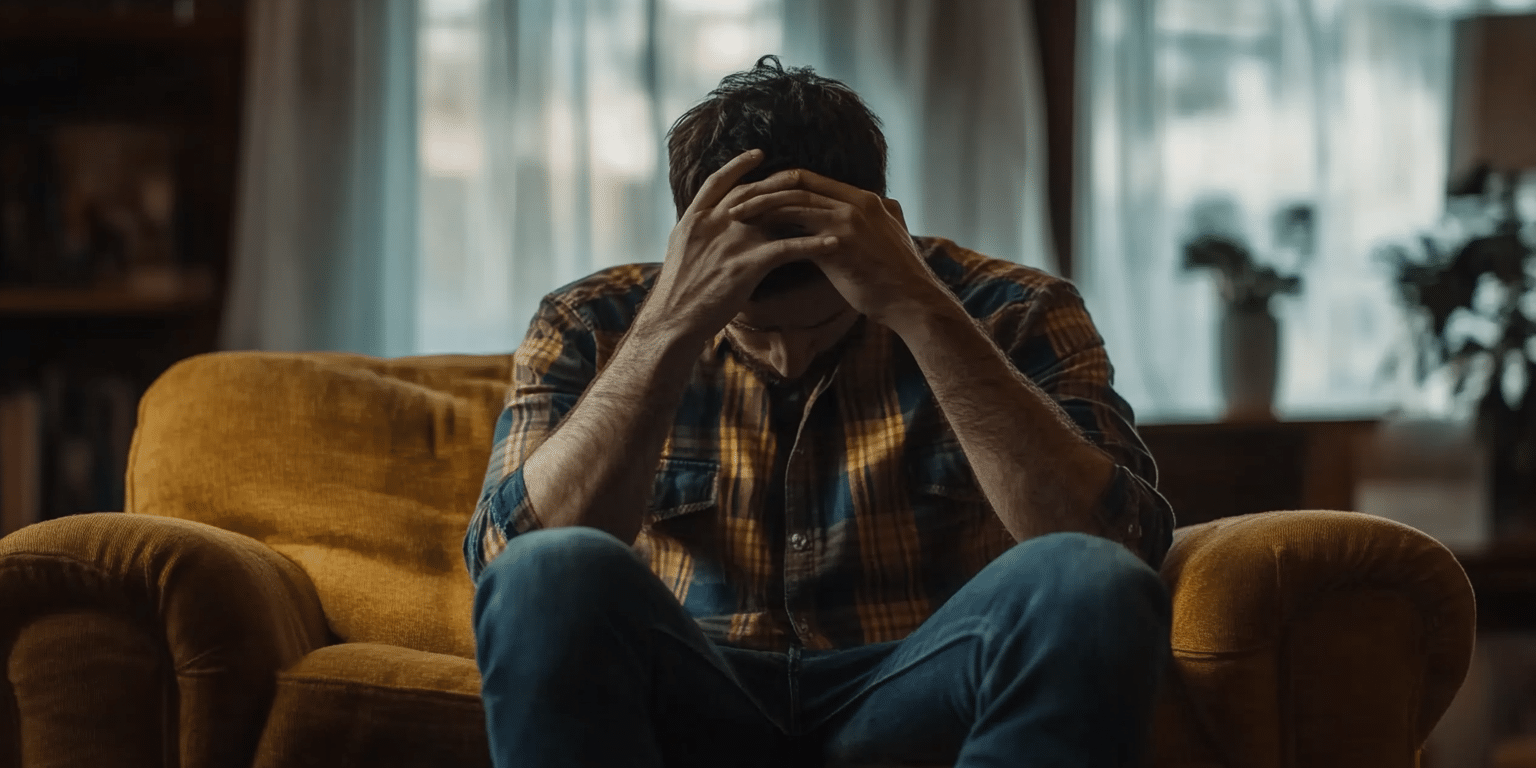Anxiety Regarding Health: How to Stop the Spiral and Feel Safe in Your Body
If every harmless twinge sends you straight to Dr. Google, you’re not alone. Health anxiety—sometimes called illness anxiety disorder—affects about 4–6 percent of adults and spiked after the COVID‑19 pandemic’s wall‑to‑wall health alerts health anxiety is rising. When your mind jumps to worst‑case scenarios, your body’s fight‑or‑flight system follows, pumping out adrenaline that makes your heart race and palms sweat. People with health anxiety often worry excessively about their health, experiencing persistent and heightened fears about having a serious illness.
That physical rush convinces your brain a real threat exists—so you search again, book one more urgent doctor visit, or avoid activities you love. The cycle keeps spinning until you learn to step off the ride. This post shows why the spiral starts, how to spot it early, and evidence‑based ways Washington, DC therapists help people feel safe in their bodies again.
Why “Anxiety Regarding Health” Hits Hard
The “What if?” Loop: Catastrophic Thinking About Symptoms
A bruise becomes leukemia. A skipped heartbeat signals a looming heart attack. Catastrophic thinking—imagining the worst with little evidence—drives health anxiety. People with health anxiety often worry about minor symptoms, interpreting them as indicators of serious health problems, and may mistake normal bodily sensations for signs of illness. Data from the National Institute of Mental Health confirm that anxious thoughts can crank up real physical sensations like muscle tension and digestive upset, further convincing you something is wrong.
Illness Anxiety Disorder vs. Normal Concern
It’s normal to feel worried about your health from time to time, such as when you notice a strange mole or track cold symptoms. Illness Anxiety Disorder is different: the worry is persistent, lasting six months or more, continues despite clear medical tests, and disrupts daily life. A GP diagnoses illness anxiety disorder based on clinical evaluation and the persistence of these symptoms. The Mayo Clinic notes that people may swing between doctor‑hopping and avoiding care altogether—both attempts to control fear.
The Role of Media and “Medical Drama” TV
News alerts and medical shows often spotlight rare, terrifying diseases, priming your brain to see danger everywhere. Researchers call the resulting search‑and‑panic cycle cyberchondria; excessive online symptom checks are linked to higher health anxiety in multiple studies excessive online searches worsen worry.
While media can raise awareness, decisions about personal health should always be based on advice from healthcare professionals rather than relying solely on online information.
Spotting the Signs of Health Anxiety Early
Common Physical Sensations That Fuel Fear
Benign sensations—like a fluttering eyelid or brief chest tightness—feel ominous when you expect illness. The Cleveland Clinic explains that people with health anxiety often misread normal bodily “noise” as red‑alert signals. Individuals with health anxiety frequently become preoccupied with their own health, interpreting these sensations as evidence of serious problems. They may fear that such sensations are signs of a severe illness, such as cancer or HIV, even when there is little evidence to support this.
Behavioral Red Flags: Excessive Googling and Doctor Visits
Repeating the same search terms, bookmarking worst‑case diagnoses, or scheduling overlapping specialist appointments can actually increase anxiety. These behaviors often result in spending a significant amount of time worrying about health. Each “just to be safe” check feeds the loop.
When Health Worries Disrupt Daily Life
If fears steal sleep, strain relationships, or keep you from work and hobbies, it’s time to get help. Health anxiety can significantly impact the lives of those affected, interfering with their overall well-being and personal fulfillment. Early intervention makes treatment easier and prevents worries from digging deeper grooves in the brain.
Evidence‑Based Ways to Break the Cycle
Cognitive Behavioral Therapy Techniques for Balanced Thoughts
Cognitive Behavioral Therapy (CBT) helps you notice distorted thoughts—“My headache must be a tumor”—and replace them with balanced statements, such as “Tension headaches are common after a long Zoom day.” Over 70 percent of people with health anxiety improve after structured CBT sessions, according to the American Psychological Association. A therapist may teach you to keep a thought record: write down the scary belief, the evidence for and against it, and a calmer alternative. One helpful exercise is to create a table with your initial worry in the first column, then more balanced thoughts in the second column. You can also do a thoughts draw—jot down or sketch your concerns, then challenge them by reframing with more balanced perspectives. The goal isn’t blind optimism; it’s accurate thinking.
Exposure and Response Prevention to Reduce Checking
When worry spikes, many people check their pulse, search symptoms, or schedule another appointment. Exposure and Response Prevention (ERP) asks you to face the trigger—say, noticing a heartbeat change—while not engaging in the safety behavior (no Googling, no extra blood pressure reading). The goal is to gradually reduce checking behaviors, such as body monitoring or seeking reassurance, over time. Repeated practice teaches your brain that discomfort can pass on its own, shrinking the urge to check. ERP has a decades‑long track record for obsessive fears, including health anxiety, with strong support from randomized studies Exposure and Response Prevention.
Mindfulness and Relaxation Techniques for a Racing Heartbeat
Mindfulness invites you to feel a sensation without judging it. Ten slow breaths, a guided body scan, or five minutes of mindfulness meditation can lower stress hormones and heart rate, reports the National Institutes of Health. Paired with progressive muscle relaxation or gentle yoga, mindfulness gives your nervous system proof that it can downshift—even when an anxious thought pops up.
Psychodynamic Therapy to Address Underlying Fears
Psychodynamic therapy looks under the hood of your story—old illnesses, family messages, and perfectionist rules—to figure out why everyday sensations can feel like five‑alarm fires. A recent meta‑analysis shows it works just as well as CBT for anxiety, and the benefits often keep snowballing after sessions wrap up. By connecting the dots between past and present, you get to rewrite the fear script with more clarity and self‑compassion.
Supporting Yourself Between Sessions
Grounding Exercises: The 3‑3‑3 Rule for Anxiety
Look around and name three things you see, three things you hear, and move three body parts. This quick drill yanks attention out of the “what if?” future and back to the present moment. A few rounds can interrupt a rising panic and make it easier to use your CBT skills.
Building a “Media Diet” to Avoid Trigger Spirals
Unfollow fear‑mongering social feeds, set a time limit on symptom searches, and choose one trusted source—like your primary care doctor—for health questions. Fewer alarming inputs means fewer sparks for the anxiety fire.
Tracking Wins in a Diary Note to Reinforce Progress
Write down small victories: Skipped Google and watched a comedy instead. Waited 24 hours before emailing my doctor. Seeing proof of progress builds confidence and motivates you to keep practicing new habits.
When to Seek Professional Help in DC
What to Expect from a Mental Health Professional
If worry rules your calendar, sleep, or relationships, talking with a therapist can feel like exhaling after holding your breath for too long. During your first session, you’ll discuss your health fears, past medical experiences, family history, and goals. Together, you’ll craft a plan—often blending CBT, mindfulness, and graded exposure—to calm both body and mind.
How Therapy Group of DC Matches You to the Right Therapist
Finding the right fit matters. Our intake team listens to your story and pairs you with a therapist who has specific training in anxiety disorders and experience working with medical concerns. Many clients tell us the match alone lowers anxiety—they finally feel understood.
Partnering with Your Primary Care Provider for Whole‑Health Care
Therapy and medicine work best as teammates. We encourage open communication (with your consent) so your therapist and doctor share notes, rule out medical issues, and reinforce consistent coping plans.
Moving Toward a More Balanced Relationship with Your Health
Celebrating Good Health Without Obsessing
Notice the moments your body supports you—a walk with a friend, a deep laugh—rather than scanning for danger. Simple gratitude practices, like naming one thing your body did well today, shift focus from fear to appreciation.
Setting Future Goals to Maintain Progress
Think beyond symptom‑watching. Maybe you’ll train for a 5K, take a dance class, or spend a weekend without checking WebMD. Concrete goals give your brain something positive to chase and proof that you’re more than your worries.
Key Takeaways and Next Steps
Health anxiety can feel loud, but it isn’t the narrator of your life. With evidence‑based therapy, mindful self‑care, and the right support team, you can quiet the “what ifs” and live with more ease in your body.
Ready to swap endless searching for steady support? Reach out to Therapy Group of DC today, and let’s start feeling safer together.
Frequently Asked Questions About Anxiety Regarding Health
What is illness anxiety disorder and how is it different from general health anxiety?
Illness anxiety disorder, sometimes called hypochondria, is a specific mental health condition where individuals have an unrealistic fear of having or developing a serious medical condition, even when they have few or no symptoms. Unlike normal concern about health issues, this disorder causes persistent emotional distress and can interfere with normal life, relationships, and daily activities.
How can I manage illness anxiety disorder effectively?
Managing illness anxiety disorder often involves a combination of talk therapy, such as cognitive behavioral therapy (CBT), and sometimes medication. Working with a behavioral health specialist can help you develop strategies to challenge unhelpful thoughts, reduce excessive checking behaviors, and gradually start engaging in normal activities again. Self-help techniques like keeping a diary to note health worries and practicing relaxation techniques can also be beneficial.
Can health anxiety cause physical symptoms?
Yes, anxiety regarding health can produce physical symptoms such as headaches, muscle tension, and a racing heartbeat. These symptoms can sometimes worsen anxiety by being misinterpreted as signs of serious illness, creating a cycle of worry and physical distress.
Is it common for people with health anxiety to have other mental health conditions?
Yes, it is common for individuals with health anxiety or illness anxiety disorder to also experience other anxiety disorders or mental health conditions like obsessive compulsive disorder or depression. Addressing these co-occurring conditions is important in treatment.
When should I seek medical care or a healthcare provider for my health worries?
If your health worries cause significant disruption to your daily life, lead to excessive medical appointments, or you find it difficult to manage anxiety worse than usual, it is important to consult your primary care provider or a mental health professional. They can help rule out physical conditions and guide you in treating illness anxiety disorder to improve your health status and quality of life.


